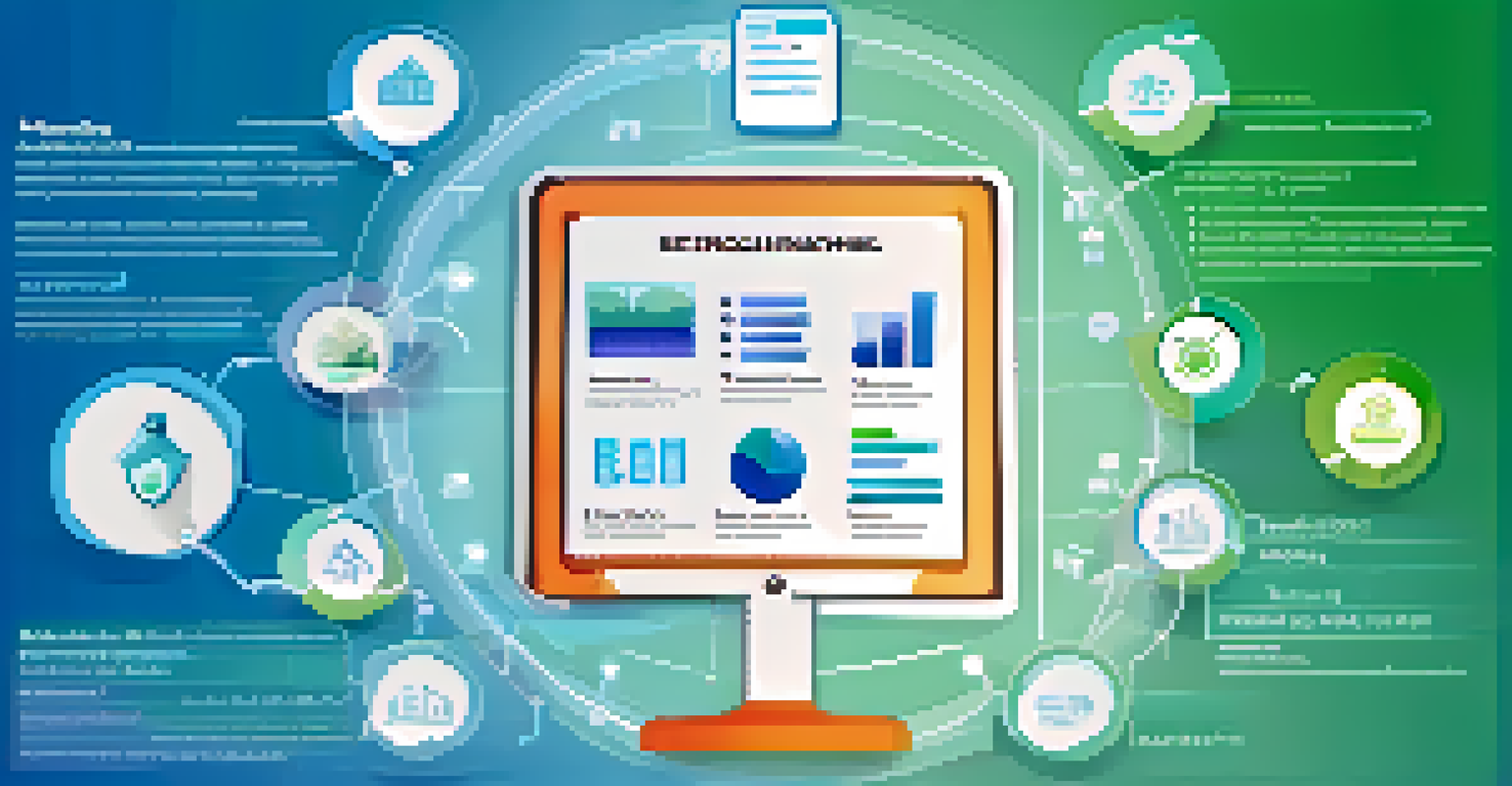Microlearning for Compliance Training: Key Considerations

Understanding Microlearning: A Quick Overview
Microlearning is a training approach that delivers content in bite-sized pieces, making it easier for learners to absorb and retain information. Instead of long, traditional training sessions, microlearning focuses on short, focused modules that can often be completed in just a few minutes. This format is particularly effective for compliance training, where information needs to be frequently updated and easily accessible.
The key to successful leadership today is influence, not authority.
The essence of microlearning lies in its ability to provide just-in-time training, allowing employees to learn exactly what they need when they need it. For example, a quick video or infographic can be used to explain a new regulation, ensuring that employees stay compliant without feeling overwhelmed. This method caters to the busy schedules of modern professionals, making learning more manageable.
By breaking down complex topics into simpler, digestible pieces, microlearning enhances understanding and retention. This is crucial in compliance training, where forgetting key rules can lead to significant consequences for both individuals and organizations. Overall, microlearning represents a shift towards more flexible and effective training solutions.
Benefits of Microlearning for Compliance Training
One of the primary benefits of microlearning is its ability to boost engagement. When training materials are short and interactive, learners are more likely to participate actively and stay focused. This is especially important in compliance training, where content can often be dry or difficult to understand. By incorporating elements like quizzes or gamification, organizations can make compliance training more enjoyable.

Another advantage is the flexibility that microlearning offers. Employees can access training on their own terms, whether during a break or while commuting. This on-demand access means that training can fit seamlessly into their busy lives, leading to higher completion rates and better knowledge retention. Additionally, this format allows for timely updates, meaning that employees can stay current with changing regulations.
Microlearning Enhances Engagement
Short, interactive training modules boost employee participation and focus, especially in compliance training.
Microlearning also supports a culture of continuous learning. Instead of viewing compliance training as a once-a-year obligation, employees can engage with the material regularly, reinforcing their knowledge over time. This ongoing learning approach not only enhances compliance adherence but also fosters an overall environment of growth and development within the organization.
Key Considerations for Implementing Microlearning
When implementing microlearning, it's essential to identify the specific compliance topics that need to be addressed. Start by conducting a thorough needs assessment to determine which areas are most critical for your organization. This could involve reviewing past compliance issues or gathering feedback from employees about their challenges with existing training formats.
Learning is a treasure that will follow its owner everywhere.
Another consideration is the design and delivery of microlearning content. It's vital to ensure that the materials are visually appealing and engaging, as well as relevant to the learner's role. Think about using diverse formats such as videos, infographics, or interactive modules, which can cater to different learning styles and preferences. The goal is to create a rich learning experience that keeps employees invested.
Finally, don't forget the importance of measuring the effectiveness of your microlearning initiatives. Use analytics to track completion rates, quiz scores, and overall engagement. Gathering feedback from participants can also provide valuable insights into what works and what doesn't. By continually refining your approach, you can ensure that your compliance training remains effective and relevant.
Integrating Microlearning into Your Compliance Strategy
To effectively integrate microlearning into your compliance strategy, start by aligning it with your overall training goals. Consider how microlearning can complement existing training methods and fill any gaps in knowledge. This holistic approach ensures that compliance training is not just a standalone effort but part of a broader learning ecosystem within the organization.
Next, develop a content calendar that outlines when and how often microlearning modules will be released. This helps maintain a steady flow of information and keeps compliance top-of-mind for employees. By scheduling regular updates and refreshers, you can reinforce important concepts and ensure that everyone is on the same page when it comes to compliance.
Flexibility in Learning Delivery
Microlearning allows employees to access training on their own schedule, improving completion rates and knowledge retention.
Lastly, foster a culture that encourages continuous learning and open communication about compliance. Encourage employees to share their experiences and insights regarding compliance issues. This not only enhances learning but also creates a sense of accountability, making compliance a shared responsibility within the organization.
Technology Tools for Microlearning in Compliance Training
Choosing the right technology tools is crucial for effective microlearning implementation. Learning Management Systems (LMS) that support mobile access, for instance, can allow employees to engage with training materials anytime, anywhere. Platforms that offer microlearning capabilities often include features such as tracking progress and providing instant feedback, which are vital for compliance training.
Additionally, consider tools that facilitate the creation of engaging content, such as video editing software or authoring tools for interactive modules. These resources can help your team develop high-quality microlearning materials that resonate with learners. Remember, the easier it is to create and distribute content, the more likely it is that your training will be effective.
Lastly, explore options for integrating social learning features into your microlearning strategy. Platforms that allow collaboration, discussion forums, or peer-to-peer learning can enhance the training experience. By leveraging community elements, organizations can create a supportive environment where employees can learn from one another and share best practices in compliance.
Challenges of Microlearning for Compliance Training
While microlearning offers numerous benefits, it does come with its own set of challenges. One significant challenge is ensuring that employees receive a comprehensive understanding of compliance topics. With microlearning focusing on bite-sized content, there’s a risk that learners may miss critical information if not carefully designed. This makes it essential to craft modules that address all necessary aspects of compliance.
Another challenge is the potential for information overload. If employees are bombarded with too many microlearning modules at once, it can lead to confusion rather than clarity. To avoid this, it’s important to pace the delivery of content and prioritize the most critical topics first. A well-structured roll-out plan can help ensure that learning is gradual and manageable.
Continuous Learning Culture
Microlearning fosters an ongoing learning environment, encouraging regular engagement with compliance material.
Finally, there may be resistance to adopting a new training format. Some employees may feel more comfortable with traditional training methods and may be hesitant to embrace microlearning. To address this, communicate the benefits clearly and provide support during the transition. Highlighting success stories and demonstrating the effectiveness of microlearning can help alleviate concerns and encourage buy-in.
Future Trends in Microlearning for Compliance Training
As technology continues to evolve, so too will the landscape of microlearning for compliance training. One exciting trend is the increasing use of artificial intelligence (AI) to personalize learning experiences. AI can analyze employee performance data to tailor content to individual needs, enhancing engagement and retention. This level of customization can make compliance training more relevant and impactful.
Another trend is the integration of augmented reality (AR) and virtual reality (VR) into microlearning modules. These immersive technologies can provide real-world scenarios that help employees understand complex compliance issues in a safe environment. For instance, a VR simulation could allow employees to practice responding to compliance-related situations, reinforcing their training in an interactive way.

Lastly, the focus on mental wellness and work-life balance is shaping how compliance training is delivered. Short, focused microlearning sessions align well with the growing demand for flexible learning options that reduce stress and cognitive load. Moving forward, organizations that prioritize employee well-being while delivering effective compliance training will likely see better engagement and adherence.